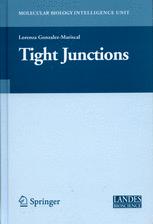

Most ebook files are in PDF format, so you can easily read them using various software such as Foxit Reader or directly on the Google Chrome browser.
Some ebook files are released by publishers in other formats such as .awz, .mobi, .epub, .fb2, etc. You may need to install specific software to read these formats on mobile/PC, such as Calibre.
Please read the tutorial at this link: https://ebookbell.com/faq
We offer FREE conversion to the popular formats you request; however, this may take some time. Therefore, right after payment, please email us, and we will try to provide the service as quickly as possible.
For some exceptional file formats or broken links (if any), please refrain from opening any disputes. Instead, email us first, and we will try to assist within a maximum of 6 hours.
EbookBell Team

4.7
66 reviewsight junctions (TJs) are cell-ceil adhesion belts that encircle epithelial and endothelial cells at the limit between the apical and the lateral Tmembrane. These junctions are crucial for the establishment of separate compartments in multicellular organisms and for the exchange of substances between the internal milieu and the external environment. The perception of TJs has changed over the years. From being regarded as static paracellular seals, they have come to be perceived as dynamic structures that adjust their morphol ogy and function in response to physiological, pharmacological and pathologi cal challenges. The roles that TJs play in epithelial and endothelial cells has also widened, and nowadays this structure is regarded not only as a fence that limits within the membrane, the movement of proteins and lipids between the apical and basolateral membranes, or as a gate that regulates in a size and charge selec tive manner the transit of ion and molecules through the paracellular pathway, but also as a structure integrated by molecules that participate in the control of cell proliferation. These observations highlight the importance of understand ing TJ physiology in order to develop effective strategies for the treatment of pathological conditions such as cancer and autoimmune diseases. This broader perception of TJs is reflected in all the chapters of the book and has been attained thanks to the identification in recent years of a wide array of proteins that constitute TJs in epithelial and endothelial cells as well as in central nervous system myelin.